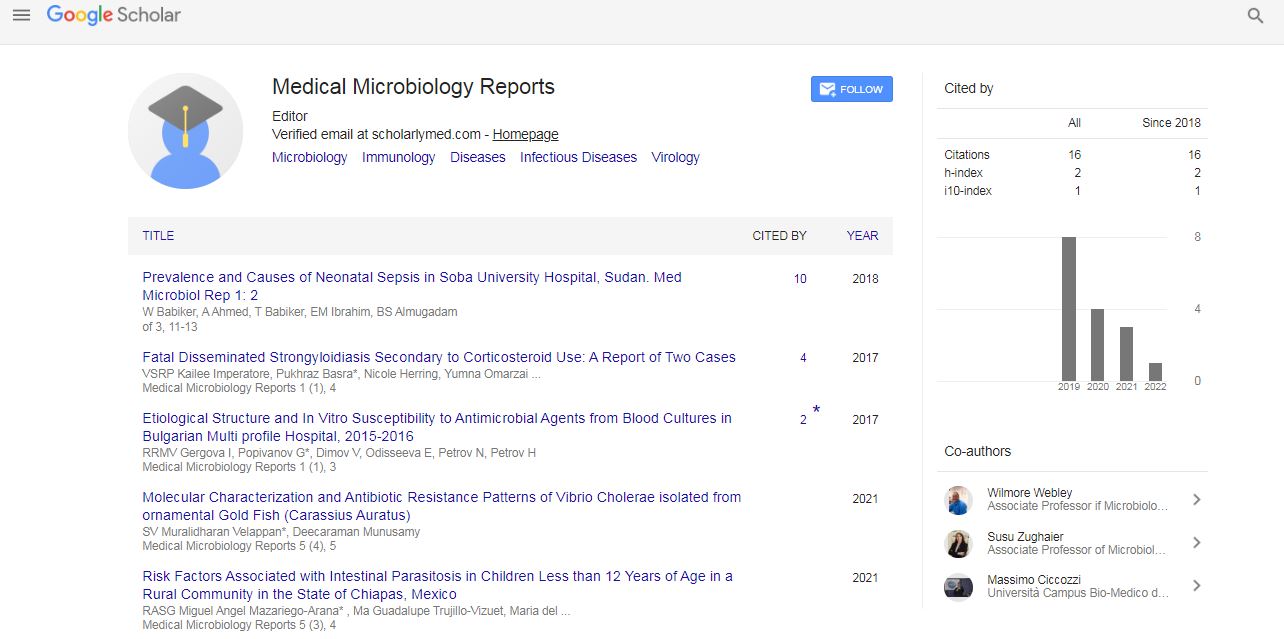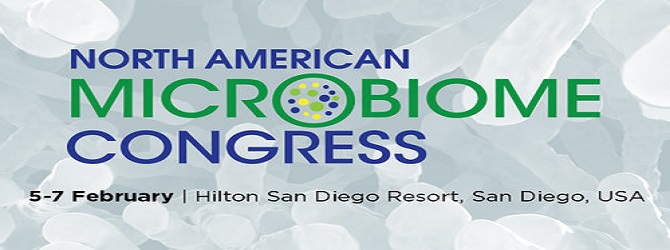Perspective, Med Microbiol Rep Vol: 7 Issue: 2
Advancements in Antimicrobial Therapy to Optimize Pathogen Elimination and Confront Resistance
Hitoshi Patierry*
Department of Emergency and Critical Care Medicine, Hiroshima University, Hiroshima, Japan
*Corresponding Author: Hitoshi Patierry
Department of Emergency and Critical Care Medicine, Hiroshima University, Hiroshima, Japan
E-mail: hitopati@hiroshima-u.ac.jp
Received date: 22 May, 2023, Manuscript No. MMR-23-107463;
Editor assigned date: 25 May, 2023, PreQC No. MMR-23-107463 (PQ);
Reviewed date: 08 June, 2023, QC No. MMR-23-107463;
Revised date: 15 June, 2023, Manuscript No. MMR-23-107463 (R);
Published date: 22 June, 2023, DOI: 10.4172/mmr.1000342
Citation: Patierry H (2023) Advancements in Antimicrobial Therapy to Optimize Pathogen Elimination and Confront Resistance. Med Microbiol Rep 7:2.
Description
Antimicrobial therapy, the use of drugs to treat infectious diseases, has revolutionized the field of medicine and significantly improved patient outcomes. By targeting and eliminating pathogenic microorganisms, antimicrobial therapy plays a vital role in combating infections and saving lives.
Antimicrobial therapy encompasses a broad range of drugs, including antibiotics, antivirals, antifungals and antiparasitic agents. These medications work by either directly killing the pathogens (bactericidal) or inhibiting the growth and replication (bacteriostatic). The goal of antimicrobial therapy is to eliminate the infectious agents while minimizing harm to the host.
One of the key advancements in antimicrobial therapy is the development of a diverse arsenal of drugs targeting specific types of microorganisms. Antibiotics, for example, have been widely used to treat bacterial infections. Over time, new classes of antibiotics have been discovered or synthesized, expanding the spectrum of coverage and improving the efficacy against a variety of bacteria. Similarly, antiviral drugs have been developed to combat viral infections, while antifungals and antiparasitic agents target fungal and parasitic infections, respectively.
The advancement of drug delivery systems and formulations has enhanced the effectiveness of antimicrobial therapy. Intravenous administration allows for rapid drug distribution throughout the body, particularly in cases of severe infections. Oral formulations offer convenience for outpatient treatment, ensuring patient compliance and reducing the need for hospitalization. Additionally, sustained-release formulations and targeted drug delivery systems help optimize drug concentration at the site of infection, enhancing the efficacy and reducing side effects.
Combination therapy is another approach that has improved pathogen elimination. This involves utilizing a variety of antimicrobial agents with various modes of action to deal with the infection from different angles. Combination therapy is commonly employed in cases of severe infections, suspected drug resistance or to achieve synergistic effects.
However, several challenges arise in the realm of antimicrobial therapy. One of the major problems is the emergence of antimicrobial resistance. Excessive use, misuse and inappropriate prescribing of antimicrobial drugs will lead to the development of resistant strains of bacteria, viruses, fungi and parasites. These resistant pathogens pose a significant threat to global health, as they can cause infections that are challenging or impossible to treat with existing medications. Addressing antimicrobial resistance requires a multifaceted approach, including improved stewardship, development of new drugs and innovative treatment strategies.
To optimize pathogen elimination and minimize resistance, it is essential to implement appropriate prescribing practices. This includes judicious use of antimicrobial agents, accurate diagnosis and tailoring treatment regimens to the specific pathogen and its susceptibility profile.
Another avenue for improved pathogen elimination lies in the development of rapid diagnostic tools. Early and accurate diagnosis allows for targeted and timely initiation of antimicrobial therapy. Rapid diagnostic tests, including molecular techniques like Polymerase Chain Reaction (PCR), can identify specific pathogens and their resistance profiles, guiding the selection of appropriate antimicrobial agents. These tools facilitate personalized treatment approaches and help prevent the unnecessary use of broad-spectrum antibiotics.
Conclusion
Antimicrobial therapy has significantly improved pathogen elimination and played a vital role in the prevention of infectious diseases. Advances in drug development, drug delivery systems, combination therapy and responsible prescribing practices will enhance the efficacy of treatment. However, the emergence of antimicrobial resistance poses a major challenge. Addressing this issue requires a comprehensive approach, including improved stewardship, analysis into new drugs and treatment approaches and rapid diagnostics. People can improve the elimination of pathogens and protect the public's health by constantly striving to optimize antimicrobial therapy.
 Spanish
Spanish  Chinese
Chinese  Russian
Russian  German
German  French
French  Japanese
Japanese  Portuguese
Portuguese  Hindi
Hindi 
